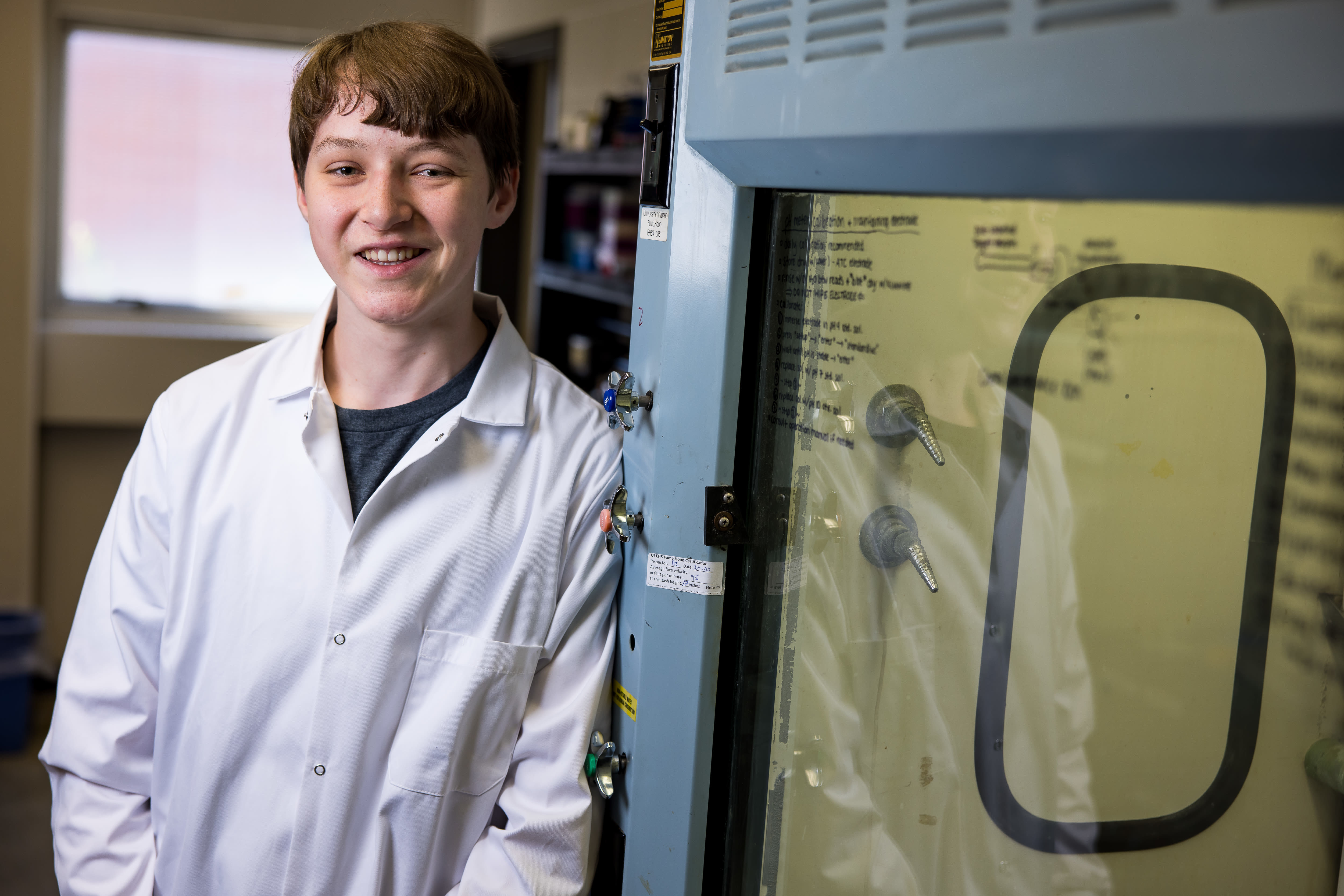Tissue Engineering
(K-419) Development of a bioreactor to mechanically stimulate cell self-assembled neotendons

Peter J. Wieber
Undergraduate Researcher
University of Idaho
Moscow, Idaho, United States- CM
Colin R. Marchus, n/a
Graduate Researcher
University of Idaho, Idaho, United States - NS
Nathan Schiele
Associate Professor
University of Idaho, Idaho, United States
Presenting Author(s)
Co-Author(s)
Primary Investigator(s)
Tendon injuries are common but current repair methods are inadequate. Even with surgical repair, scar tissue and incomplete tendon healing result in prolonged weakness which presents a risk for re-rupture. Thus, new regenerative treatment methods are required. To develop new treatments, mesenchymal stem cells (MSCs) have been explored in tissue engineering strategies to form tendon replacements. Much of the current research is focused on recapitulating adult tendon structure and function using biomaterial scaffolds, but tissue engineering approaches aimed at modeling embryonic tissue development may lead to a new understanding of tissue formation. Our lab has developed a tissue engineering method to guide MSCs to form neotendons through directed cell self-assembly, which appear to mimic the early highly cellular stages of embryonic tendon formation. However, maturation of these neotendons may be limited without the dynamic mechanical stimulation associated with in vivo muscle contraction. Applying mechanical stimulation is a unique challenge due to the delicate nature and small size of the neotendons. Thus, our objective was to develop a bioreactor system to mechanically stimulate the neotendons and assess how that stimulation alters cell morphology.
Materials and Methods::
In designing the bioreactor, there were several criteria that had to be met. Mainly, the bioreactor must be non-cytotoxic, it must maintain the integrity of the neotendon, be compatible with the existing motor controller [1], and be watertight. The bioreactor was designed in SolidWorks (Fig 1A, 1B) to address these criteria. Prior to 3D printing in resin, potential resins were assessed for cytotoxicity. To do this, resin samples (VeroUltraClearTM, VeroClearTM, and ABSplus) were printed on a Stratasys J850 printer. Samples were sterilized in ethanol and were subsequently incubated in standard cell culture media for 1, 2, and 3 days. This resin extract media was then used to culture murine C3H10T1/2 MSCs (ATCC, Manassas, VA) in a 12-well plate. Cytotoxicity was qualitatively assessed following ISO 10993-5:2009.
The bioreactor was 3D-printed with VeroClearTM(VC) Resin on a Stratasys J850 printer while the accessory components were 3D-printed with PLA plastic on an Ender 3 printer. For the preliminary testing of the bioreactor, neotendons were grown by seeding 3 million MSCs in a custom agarose well. After 48 hours of preculture, neotendons were loaded into the bioreactor chamber and were cyclically loaded with 1% strain at 0.1 Hz for 4 hours. Neotendons were collected 24 hours later and were fixed in 10% formalin. Cell morphology was qualitatively assessed using fluorescence microscopy in which cell nuclei were stained with DAPI and the actin cytoskeleton was stained with FITC-phalloidin.
Results, Conclusions, and Discussions::
From the cytotoxicity assay, day 1 of treatment with the VeroClearTM(VC) resin extract media saw slightly more rounded cells in the media. However, by day 3 the differences between treatment and control diminished. Cell density appeared to decrease by a small margin when treated with the resin extract, but the resin would be classified as only slight cytotoxicity as described in ISO 10993-5:2009. Therefore, we deemed the VeroClearTM(VC) as an acceptable material and used it to print the main body of the bioreactor chamber (Fig 1C). The bioreactor design meets the design criteria, connects to our prior system [1] and is capable of applying dynamic mechanical loading to neotendons. Additionally, despite their small size (~6 mm long) and fragile nature, the neotendons withstood the process of mounting, gripping, and applying 1% tensile strain. Staining demonstrated that 24 hours after a loading cycle, cells in the neotendon maintained a cohesive structure. No differences were detected between loaded and static controls, and future work will explore higher loading magnitudes and longer timepoints. There are a few suggestions for future work as well including increasing the time of pre-culture or treating the neotendons with a tenogenic factor such as TGF-β2 before applying loading. Lastly, some warping of the bioreactor occurred with multiple ethanol sterilization cycles suggesting that an alternative method (e.g., autoclaving) should be explored to increase the lifespan of the 3D resin-printed parts. In conclusion, we developed and tested a bioreactor system that can successfully apply mechanical stimuli to a cell-self assembled neotendon. Using this system, we can better understand how mechanical tensile loading impacts the early stages of tendon tissue formation in vitro.
Acknowledgements (Optional): :
References (Optional): :
< 1. Raveling AR, Theodossiou SK, Schiele NR. A 3D printed mechanical bioreactor for investigating mechanobiology and soft tissue mechanics. MethodsX. 2018 Apr; 5:924-932
